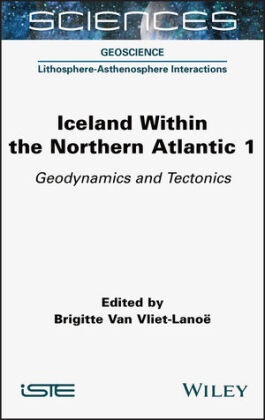Read more
The volcanic island of Iceland is a unique geological place due both to its position in the middle of the Atlantic Ocean and its repeated glaciations. It has been an accurate recorder of geodynamic and regional climatic evolutions for at least the last 15 million years.
This book traces the history of Iceland, which is linked to the opening of the North Atlantic and the reactivation of the ancient suture of the Iapetus Ocean. It gives a view of climate evolution that is partly controlled by the dynamics of the ocean floor and analyzes the movement of the Jan Mayen tectonic plate and the progressive insularization of the Greenland-Faroe Ridge, which gave birth to Iceland. It also tries to understand the formation and migration of the deep Iceland hotspot and the lava flows that have, for millions of years, shaped this island.
This book brings together the internal and external geodynamics of our planet to understand how Iceland functions and its role as a recorder of the paleoclimatic evolution of the Northern Hemisphere.
List of contents
List of Abbreviations ix
Preface xv
Brigitte VAN VLIET-LANOË and Françoise BERGERAT
Introduction xix
Brigitte VAN VLIET-LANOË and René MAURY
Chapter 1. Iceland, in the Lineage of Two Oceans 1
Brigitte VAN VLIET-LANOË and Françoise BERGERAT
1.1. Geographic and geodynamic context 5
1.2. Components of the North Atlantic domain 7
1.2.1. The Mid-Atlantic Ridge 7
1.2.2. The North Atlantic Igneous Province 7
1.2.3. The Icelandic hot spot 8
1.2.4. The Greenland-Iceland-Faroe Ridge 11
1.3. Geodynamic characteristics of Iceland 11
1.3.1. Seismicity 12
1.3.2. Icelandic volcanism 13
1.3.3. Eustatism and the Icelandic glaciers 14
1.4. References 18
Chapter 2. Iceland, an Emerging Ocean Rift 21
Françoise BERGERAT
2.1. Mid-Atlantic Ridge and Icelandic hot spot interactions 21
2.2. Present-day deformations in Iceland 23
2.2.1. Seismicity 24
2.2.2. Motions at plate boundaries 39
2.3. Iceland's main structural features 40
2.3.1. The paleo-rifts and the active rift 41
2.3.2. The transform zones 58
2.4. Geothermal energy and hydrothermalism 86
2.4.1. Geothermal systems 86
2.4.2. Geysers and hydrothermalism 94
2.5. References 97
Chapter 3. Iceland, A legacy of North Atlantic History 115
Laurent GEOFFROY
3.1. Bathymetry of the Northeast Atlantic domain and geoid anomalies 115
3.2. The North Atlantic and the continental breakup of Laurussia 117
3.2.1. Passive margins and large igneous provinces 118
3.2.2. The early beginnings of the opening of the North Atlantic Ocean 125
3.2.3.Thulean magmatism in the Paleocene and the continental breakup of the Northeast Atlantic 133
3.2.4. Chronology and kinematics of the opening of the Northeast Atlantic 142
3.2.5. The Northeast Atlantic region: mantle plume or not? 151
3.3. The origin of Iceland 159
3.3.1. The anomalous crust of the GIFR ridge and the deep structure of Iceland 159
3.3.2. Icelandic SDRs 162
3.3.3. Interpretations of GIFR and Iceland 165
3.4. References 170
Conclusion 179
Françoise BERGERAT and Laurent GEOFFROY
References 185
List of Authors 199
Index 201
Summary of Volume 2 207
About the author
Brigitte Van Vliet-Lanoë is Emeritus Research Director at CNRS and is part of the Ocean Geosciences Laboratory at the University of Western Brittany, France. A surface geologist, she is a specialist in stratigraphy and the sedimentary formations of cold continental environments and their deformation by paleoseismicity.
Summary
The volcanic island of Iceland is a unique geological place due both to its position in the middle of the Atlantic Ocean and its repeated glaciations. It has been an accurate recorder of geodynamic and regional climatic evolutions for at least the last 15 million years.
This book traces the history of Iceland, which is linked to the opening of the North Atlantic and the reactivation of the ancient suture of the Iapetus Ocean. It gives a view of climate evolution that is partly controlled by the dynamics of the ocean floor and analyzes the movement of the Jan Mayen tectonic plate and the progressive insularization of the Greenland-Faroe Ridge, which gave birth to Iceland. It also tries to understand the formation and migration of the deep Iceland hotspot and the lava flows that have, for millions of years, shaped this island.
This book brings together the internal and external geodynamics of our planet to understand how Iceland functions and its role as a recorder of the paleoclimatic evolution of the Northern Hemisphere.

